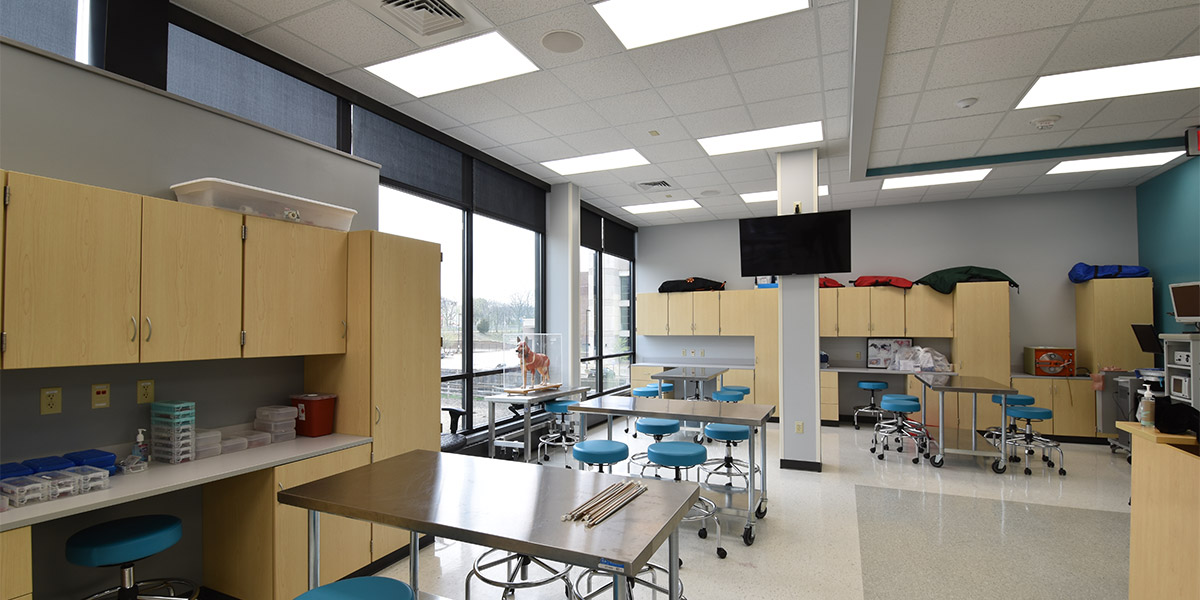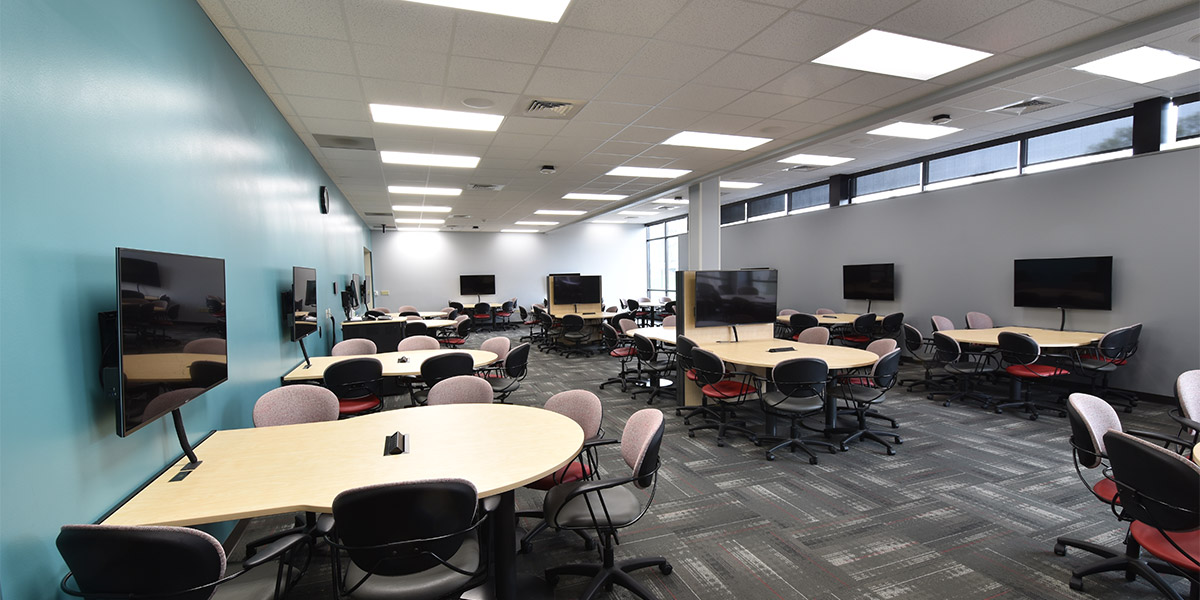Objective:
Active Collaboration
This project’s object was to transform an underutilized storage area and adjacent roof on the 2nd floor of the University of Wisconsin-Madison School of Veterinary Medicine into a new 52 student clinical skills lab, a 96-seat active learning classroom, and a much-needed collaborative study lounge. The three main goals of this remodeling were: improve the access to natural light, expand study space, and improve circulation within the building.
“Strang has played a great role in creating facilities that will meet our needs well into the 21st century... Strang has designed a facility that will not only meet current WVDL needs, but will provide maximum flexibility for meeting future, and yet unforeseen issues and opportunities.”
Daryl D. Buss, DVM, PhD, Dean, UW-Madison School of Veterinary Medicine
SOLUTION:
Facility Facelift
To allow a constant exposure to daylight, the three new spaces are located along the south façade of the new enclosure. Access to natural light is also achieved by strategically locating interior glazing to allow light from the new façade to spread into the existing corridors. Support spaces, including the replacement of a displaced storage room, have been centralized within the existing core of the project area to allow for circulation improvement.
The second floor of the facility, which is the center of student activity in the building, has been given a major upgrade by the creation of formal and informal learning spaces. The building’s challenging massive floor plates and modest fenestration were addressed with the infusion of more daylight into the interior. The building now provides shared office spaces for technical staff in order to reduce office space and to facilitate more staff time in the laboratory spaces where revenue is generated. “Breakout” spaces are also provided outside of laboratory spaces to allow staff opportunities for informal discussions/meetings and idea sharing. The two-story main entrance lobby is a “hub” and transition area to the laboratory wings and common spaces (such as conference rooms and training areas).














